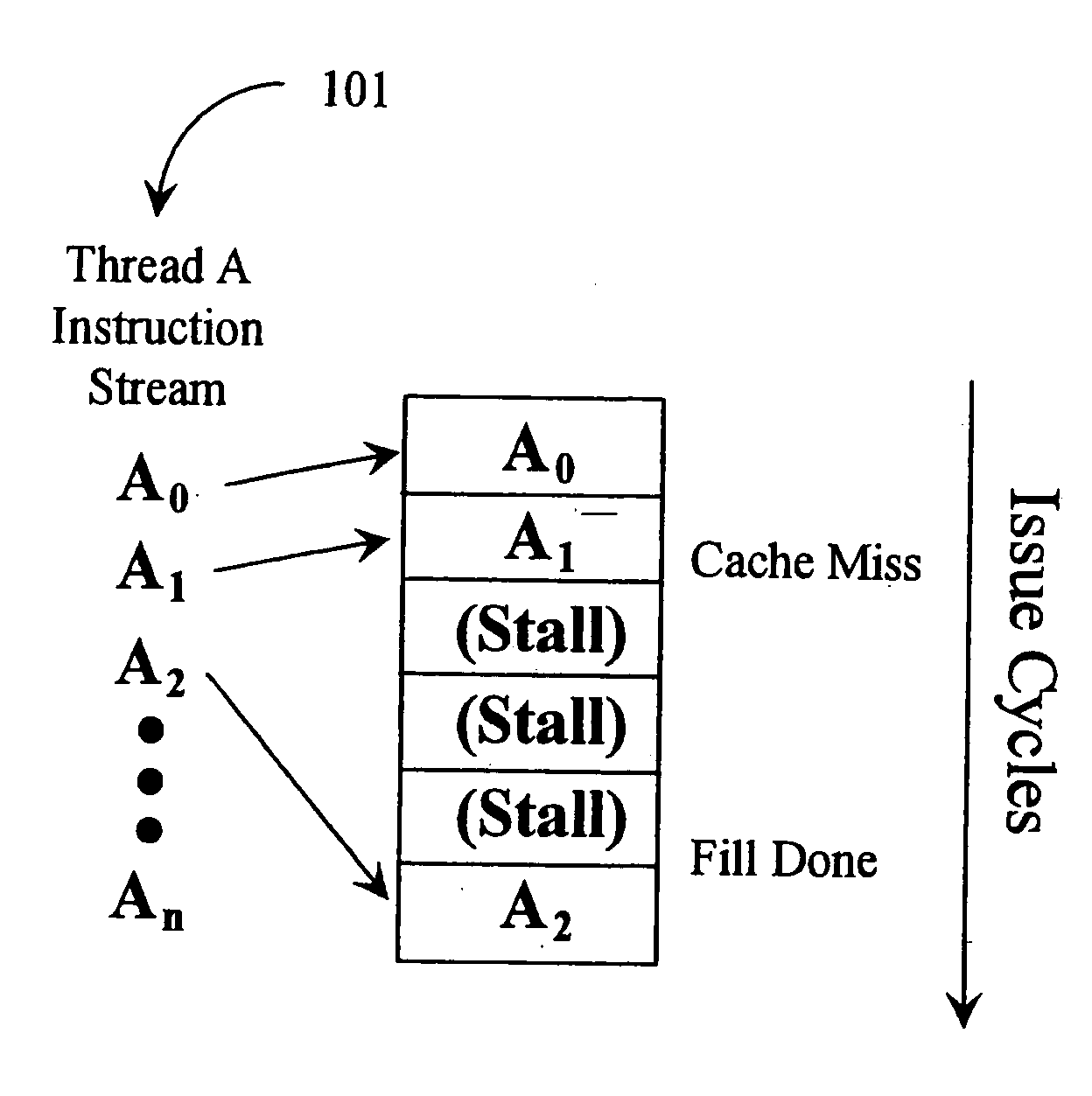Integrated mechanism for suspension and deallocation of computational threads of execution in a processor
a technology of execution and deallocation, applied in computation using denominational number representation, multi-programming arrangements, instruments, etc., can solve the problems of ensuring the strict real-time execution of dsp code is far more difficult in a combined multi-tasking environment, and the relative undemanding bandwidth is not enough, so as to achieve efficient execution of program threads and reduce overhead , the effect of avoiding overflow
- Summary
- Abstract
- Description
- Claims
- Application Information
AI Technical Summary
Benefits of technology
Problems solved by technology
Method used
Image
Examples
first embodiment
[0087] The YIELD instruction causes the current thread to be selectively de-scheduled. The format of a YIELD instruction 600, according to a first embodiment, is shown in FIG. 6, and FIG. 32 is a flow chart 3200 illustrating operation of a system in an embodiment of the invention to assert the function of the YIELD instruction of FIG. 6. A second embodiment of the YIELD instruction 3500 is described below with respect to FIGS. 35 through 40.
[0088] The YIELD instruction 600 takes a single operand value from, for example, a GPR identified in field 602 (rs). A GPR is used in one embodiment, but in alternative embodiments the operand value may be stored in and retrieved from essentially any data storage device (e.g., non-GPR register, memory, etc.) accessible to the system. In one embodiment, contents of GPR rs can be thought of as a descriptor of the circumstances under which the issuing thread should be rescheduled. If the contents of GPR rs is zero (i.e., the value of the operand is...
second embodiment
[0203] Referring now to FIG. 35, a block diagram illustrating the format of the YIELD instruction 3500 according to an alternate embodiment of the present invention is shown. The YIELD instruction 3500 of FIG. 35 is similar to the instruction 600 of FIG. 6 as indicated; however, the YIELD instruction 3500 of FIG. 35 includes two differences. First, the meaning of the value stored in the register specified by the rs field 3502 is slightly different, as described below. Second, the YIELD instruction 3500 of FIG. 35 also includes a second operand field, rd 3504. In the embodiment of FIG. 35, the rd operand field 3504 comprises bits 11 through 15 of the YIELD instruction 3500. The rd operand field 3504 specifies a destination register, such as a GPR, which receives a result value at completion of the YIELD instruction 3500, as described below.
[0204] Referring now to FIG. 36, a block diagram of a processor core 3302 for executing the YIELD instruction 3500 of FIG. 35 according to the al...
PUM
 Login to View More
Login to View More Abstract
Description
Claims
Application Information
 Login to View More
Login to View More - R&D
- Intellectual Property
- Life Sciences
- Materials
- Tech Scout
- Unparalleled Data Quality
- Higher Quality Content
- 60% Fewer Hallucinations
Browse by: Latest US Patents, China's latest patents, Technical Efficacy Thesaurus, Application Domain, Technology Topic, Popular Technical Reports.
© 2025 PatSnap. All rights reserved.Legal|Privacy policy|Modern Slavery Act Transparency Statement|Sitemap|About US| Contact US: help@patsnap.com



